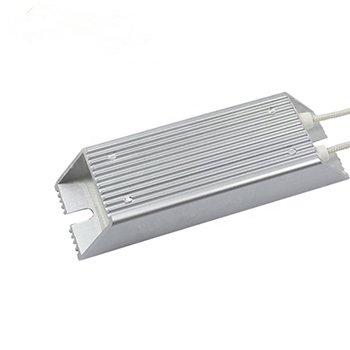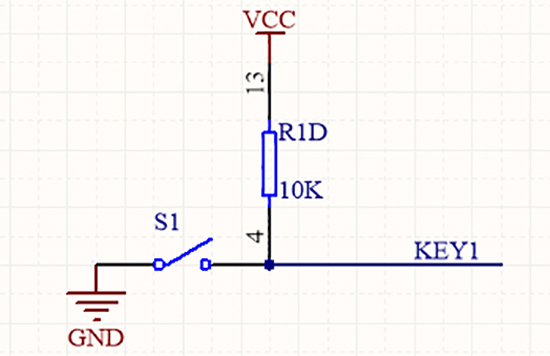How does Resistor Work?
A resistor is a current-limiting element. After the resistor is connected to the circuit, it can limit the amount of current passing through the branch it is connected to. Nowadays, resistors play a huge role in controlling current and voltage. Next, we will introduce how resistors work and the maintenance of resistors.
Working principle of resistor
The working principle of a resistor is based on Ohm's law, that is to say, the resistance is proportional to the current and voltage, and the size of the resistor can be controlled by its material, length, cross-sectional area and other factors. When current passes through a resistor, the electrons encounter resistance, and the greater the resistance of the resistor, the more resistance the electrons encounter, causing the current to flow slower. Resistors are linear components. Under the condition of satisfying Ohm's law, the relationship between current and voltage is linear. The resistance value of resistors is often used as a key parameter to control circuit performance.
Resistors are usually made of conductive materials such as metals, carbon, ceramics, etc. The resistance characteristics of these materials are different, and different materials can be selected to make resistors with different resistance values according to needs. The internal structure of a resistor is usually a wire wound on an insulating material. The length, diameter, and type of material of the wire all affect the resistance of the resistor.
When the current passes through the resistor, the electrons collide with the atoms in the wire, causing the electrons to slow down, and the electrical energy is converted into heat energy and dissipated. This process is called resistor heating and is the basic principle behind how resistors work. The larger the resistance value of the resistor, the stronger the heat generated when the current passes and the temperature of the resistor will also increase accordingly. Therefore, the operating temperature of the resistor is an important factor to consider.
Resistors work on other principles besides heating. For example, resistors can be used to divide voltage in a voltage circuit, dividing high voltages into lower voltages to keep other components safe. Resistors can also be used for current limiting, limiting the current within a certain range to prevent overloading and damage to components in the circuit.
The working principle of the resistor can be summarized as follows: the resistance value of the resistor has a linear relationship with the current and voltage, and the magnitude of the current in the circuit can be controlled by changing the resistance value of the resistor. Resistors are widely used in various electronic circuits and are used to control circuit performance, limit current, distribute voltage, protect electronic components, and so on.
The role of resistors
- Restricting the flow of current: A resistor is an electronic component that restricts the flow of current. When electrons pass through a resistor, they will encounter resistance in the resistor, thereby slowing down the movement speed of electrons and limiting the flow of current, thereby achieving the purpose of controlling the circuit current.
- Voltage division: Resistors can be used as voltage dividers to distribute the voltage in the circuit to multiple components in proportion, so as to achieve the function of controlling the voltage of the circuit.
- Adjust circuit performance: By changing the resistance value of the resistor, the performance of the circuit can be adjusted, such as reducing the noise in the circuit, adjusting the output voltage and magnification of the circuit, etc.

- Converting energy: In some applications, aluminum wire wound resistors can convert electrical energy into thermal or mechanical energy. For example, the resistance wire in an electric furnace generates heat for heating. The resistors in the motor are used to control the speed of the motor, which converts electrical energy into mechanical energy.
- Protect electronic components: Resistors also protect other electronic components. For example, in the LED circuit, in order to prevent the LED from being damaged by excessive current, we can add a resistor of appropriate size to the circuit to limit the flow of current, thereby protecting the LED component.
- Separation of signals: In some circuits, different signals need to be isolated to avoid mutual interference. At this time, the signals can be separated by resistors.
Classification of resistance
- According to the characteristics of the resistance value, it can be divided into fixed resistance, adjustable resistance, and special resistance (sensitive resistance).
- According to the manufacturing materials, it is divided into carbon film resistors, metal film resistors, wire wound resistors, non-inductive resistors, thin film resistors, etc.
- According to the packaging form, it is divided into chip resistors and in-line resistors.
Precautions for the use of resistors
Resistors are one of the most common components in electrical circuits. When using resistors, you need to pay attention to the following:
- Resistor power: When choosing a resistor, pay attention to its power. You should choose a suitable resistor according to the maximum power demand of the connected circuit, so as to avoid the so-called "burning resistance" phenomenon caused by the overload of the resistor.
- Tolerance range: The tolerance range of resistors needs to be considered when selecting, especially for circuits that are sensitive to resistance values, and resistors with large tolerances cannot be selected to avoid measurement errors and instability.
- Working environment: Pay attention to the working environment of the resistor, such as temperature, humidity, gas, and other factors. Select the appropriate resistance material according to the actual surrounding environment to ensure its normal operation, especially for resistors with high operating temperature or high voltage environments, their reliability should be fully considered.
- Installation: The resistor should be installed firmly and in good contact with the casing or other grounding parts to prevent open circuits and short circuits caused by vibration, vibration, and temperature changes.
- Avoid overuse: Avoid frequent overuse during use, and avoid damage to the structure and performance of the resistor due to excessive current impact and over temperature.
- Pay attention to wiring: The resistance is sensitive to the length and contact area of the wire. The quality and method of wiring should be ensured to be correct and stable to reduce errors and failures caused by wiring.
- Storage: The resistor should be stored in a dusty and dry environment, avoiding moisture, high temperature, direct sunlight, etc., so as not to cause the resistance performance to deteriorate or fail.
In short, during the selection, installation, and use of resistors, it is necessary to be careful and prudent to ensure their normal working condition and prolong their service life as much as possible.

